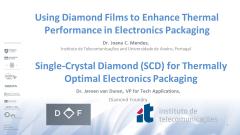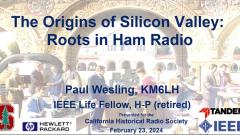2011 IEEE Honors: IEEE Dennis J. Picard Medal for Radar Technologies and Applications - James M. Headrick
For over six decades James M. Headrick was a key contributor to the success of high-frequency over-the-horizon (OTH) radar, an important advance over conventional microwave radar tech- niques. High-frequency OTH radar has a range of 2,000 nautical miles and beyond for detecting aircraft, ships and ballistic missiles and determining the strength of winds that drive ocean waves. Mr. Headrick's pioneering work to develop high-frequen- cy OTH radar began at the U.S. Naval Research Laboratory in the late 1940s. By 1956 the Naval Research Laboratory was the first to successfully demonstrate a Doppler shift technique for detecting aircraft and ships despite the echoes caused by sea clutter. Mr. Headrick's efforts led to the operation of the Naval Research Lab's MADRE (for magnetic drum radar equipment) OTH radar located on the western shore of the Chesapeake Bay in 1961. He demonstrated the detection of aircraft and ships, of nuclear tests, of ballistic missile launches and the importance of sea echoes. MADRE provided the foundation that led to the U.S. Air Force's Continental Air Defense radar as well as the U.S. Navy's Relocatable OTH Radar (ROTHR) system, which has been adapted for use by U.S. Customs to detect drug smugglers trying to cross the U.S. border. Mr. Headrick's work has also affected radar systems outside the United States, such as Australia's Jindalee radar, which is the cornerstone of Australia's national surveillance system. An IEEE Life Senior Member, Mr. Headrick, who passed away in February 2011, was a retired annuitant research engineer with the U.S. Naval Research Laboratory residing in Stanfield, Ore
James M. Headrick receives the IEEE Dennis J. Picard Medal for Radar Technologies and Applications
 Cart
Cart Create Account
Create Account Sign In
Sign In





